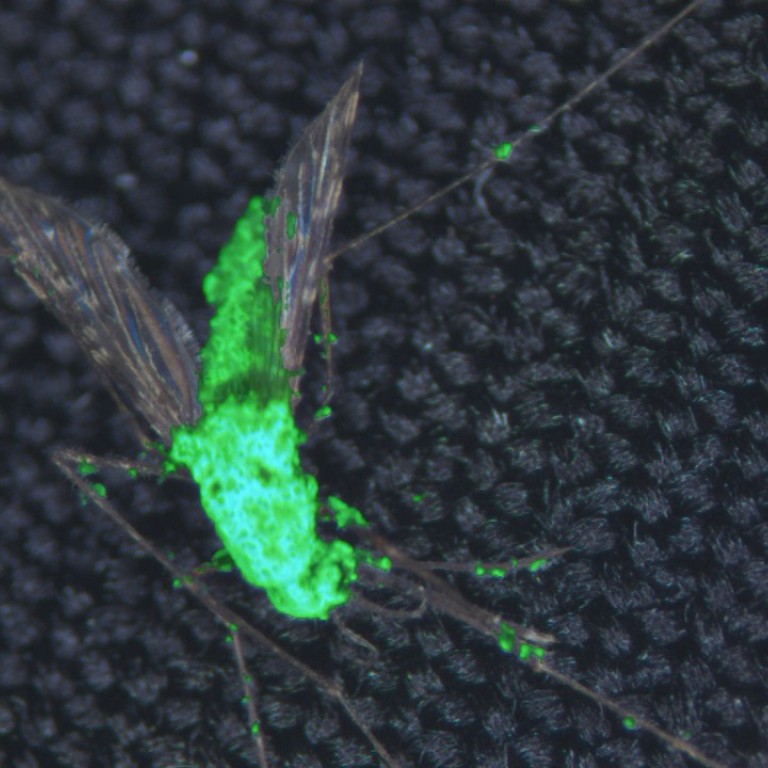
How to wipe out mosquitoes and eradicate malaria? A mutant fungus may hold the answer
Scientists genetically modify fungus using poison from spiders and scorpions to reduce population of the disease-carrying insects
A new species of toxin-producing fungus created by scientists could be used to kill mosquitoes and help in the fight against malaria, according to a research paper published in the journal Scientific Reports.
Chinese professor Fang Weiguo, a microbiologist with Zhejiang University and one of the authors of the paper, said extensive field experiments carried out in Africa had produced positive results.
Though the toxin, which is similar to those produced by spiders and scorpions, is deadly to mosquitoes it is harmless to humans, said the report, which was published on Tuesday.
Once it comes into contact with a mosquito, the fungus releases spores that penetrate the insect’s exoskeleton and enter its bloodstream. These then release a toxin targeting the nervous system that either kills the host or renders it severely brain damaged and unable to suck blood.
China is home to several diseases that are spread by mosquitoes. Malaria exists along the Yangtze River, and outbreaks of dengue fever have caused widespread public concern in some southern provinces, Fang said.
“This technology provides a new biological approach to rapidly reducing the mosquito population, especially in emergency cases,” he said.
Fang’s team, which in 2011 created a transgenic fungus that killed the human malaria parasite in mosquitoes, collaborated with scientists from the University of Maryland in the US and the Institut de Recherche en Sciences de la Sante in Burkina Faso on the fungus project.
The team injected genes from scorpions and spiders into samples of the Metarhizium pingshaensei fungus, which is known to be harmless to human. The genes then encoded a mixture of different neurotoxins, Fang said.
When asked if the mutated fungus might be a danger to humans, he replied, “Absolutely not”.
In fact, the mosquito-killing fungus is unable even to kill a bee, the report said, adding that researchers noted no ill effects when honey bees were sprayed with large amounts of it.
Dr Wang Pan, a neurotoxin researcher with the Institute of Zoology, Chinese Academy of Sciences in Beijing, said it was possible the fungus could be used to kill mosquitoes without harming other crenatures.
“Body structure, metabolism and habits differ greatly between insects,” said Wang, who was not involved in the research.
“Unlike most other pests, mosquitoes share the human living environment and are hard to kill. Finding an effective control method that does not pose a threat to humans or the environment is important and meaningful,” she said.
Wang, however, doubted if the technology could be put into practical use in the short term. As a genetically engineered species, once introduced into the environment the fungus could mutate or pass the alien genes on to other species, causing unexpected ecological problems.
Fang was more upbeat about the possible applications saying his team had found a way to make the fungus vulnerable to ultraviolet radiation. Fungi could be released in the evening to kill mosquitoes and then would die when the sun came out, he said.
According to figures from the World Health Organisation, malaria causes half a million deaths every year, and after decades of use mosquitoes have developed resistance to many chemical pesticides.

